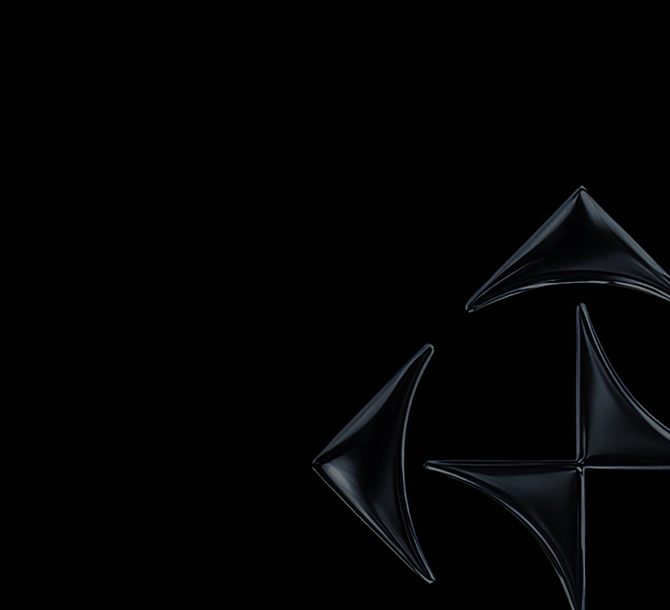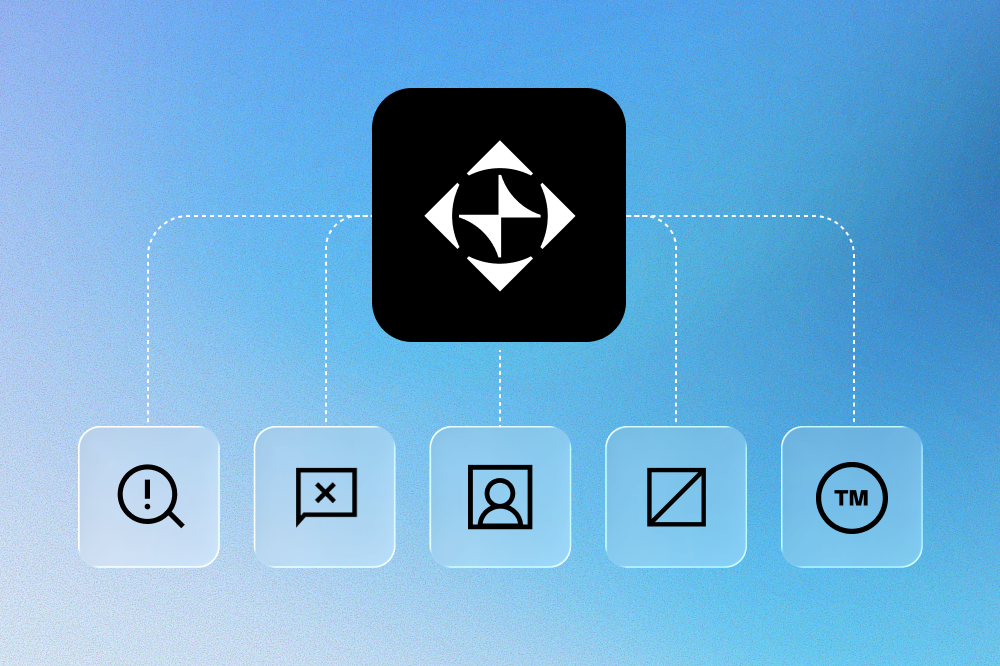Impersonating websites are malicious and damaging attacks on your brand, and they’ve never been easier to set up than they are right now. They abuse your trusted company name to trick people into malicious phishing scams or purchasing counterfeit products unwittingly.
The good news is that there are direct methods available to brands of all sizes to help you take down impersonating sites when you find them.
In this article, we’ll cover the details of impersonating websites, why they’re growing in number so quickly, and what you can do to stop them. If you have any more questions, we’d love to help! Get in touch today!
What Is Website Impersonation?
Website impersonation, also known as rogue websites or domain impersonation, is an illegal practice where criminals create a fake website that mimics a legitimate one to deceive visitors, steal sensitive information, or carry out scams.
The intellectual property of the legitimate website, like the trademarked name and logos and copyrighted images, are stolen to convince users of its authenticity.
This type of attack can lead to significant financial losses and damage to a brand's reputation.
Why Impersonate a Website?
There's one main goal for impersonating the website of a legitimate business: to confuse consumers and trick them into taking harmful actions they wouldn't usually take. The two most common objectives for criminals impersonating a websites are phishing scams and selling counterfeit products.
Phishing Scams
Phishing scams generally involve sending fraudulent communications that appear to come from a legitimate source, like a text, email, or in this case - a website.
There are a few common aims of phishing scams, all extremely dangerous to consumers. Stealing money from unsuspecting people, gaining access to their sensitive data and login information, or installing malware on their device are the biggest threats to your consumers, and can each have life-ruining consequences.
Counterfeit Products
By replicating the look and feel of authentic businesses, impersonating websites lure unsuspecting consumers into purchasing counterfeit goods or services.
While many shoppers do intentionally look for counterfeits, hoping to find a bargain on an item that looks "close enough", most shoppers have no interest in buying fakes. Impersonating websites are aimed at these shoppers, who only want to buy from trusted websites.
From baby products to car parts, counterfeit products are often of inferior quality and can pose significant safety risks to consumers, even threatening their lives. Businesses have a responsibility to make sure their branding isn't being used to trick consumers into buying products that can hurt them.
What Can You Do About Website Impersonation?
Here’s the good news. Once you’ve identified a site that’s trying to pass itself off as your brand, you have a number of options, each one better than the last.
De-index It
You can de-index the fake site, reducing its visibility and preventing it from appearing in search results. This step helps minimize the site's reach and impact, particularly while you work on more impactful solutions. Just use Google Safe Browsing to report the impersonating website.
Take it down
By reporting the fraudulent site to the hosting provider and relevant authorities, you can have it completely taken down. Many hosting and infrastructure providers have procedures in place to handle these reports swiftly. Website takedowns are usually your best option for dealing with an impersonating site, unless you get the chance to reclaim it.
Reclaim It
The last and best option against an impersonating website is to reclaim it for your own brand. If you’re able to do this, then you can redirect traffic to your legitimate website, ensuring users end up on your real website and completely avoid the scams. This option can be tricky, though, since it might take legal action to get this sort of access. So, getting the website taken down is usually the best route.
Why Are Impersonating Websites Growing?
Simply put, this is one of the cases where improvements in digital automation benefits the bad actors as much as legitimate businesses. They can be set up by major criminal organizations or small tech-savvy groups, looking to abuse your trusted intellectual property to scam unsuspecting people.
These bad actors can now use scrapers, software that pulls information from online sources, to collect information from your website to create fake storefronts. They can go after your current website, or even a defunct one from years ago using tools to access old versions of webpages.
Automation also makes it easy to generate website names, register cheap domains, and finish other tasks required to get a website up and running. In short, it means most of what goes into creating impersonating websites can be done passively, making it very quick to publish them.
The Problem of Fighting Impersonating Websites
Despite the cooperation from different service providers online, like Google or Cloudflare, these types of sites are still a huge headache for a brand to have to deal with.
Because of the automation that goes into setting up these sites, it means they appear - and reappear - very quickly.
Many of them are also savvy enough to avoid replying on search engine results pages to find customers. Instead, they use digital ads for impersonating on social media platforms and other spaces to find people. By avoiding search engines, it can be extremely difficult for a business to actually find these websites, who instead target other people with advertising.
The raw numbers of these sites can contribute to the difficulty, too. Yes, they can be taken down in a fairly smooth process once found. But having to do this again and again is too much of a burden for a small business. Even if the sites are caught quickly, it can be such a drain on resources to continually repeat this process, especially as the people creating them face no real pressure to stop their operation.
FAQ - Impersonating Websites
Can I take down impersonating websites by myself?
- Yes, you can take down impersonating websites on your own, but it can be a time-consuming and resource-intensive process, which is especially challenging for small businesses. Utilizing a service like MarqVision can streamline and automate this process, saving you time and effort.
Are these websites illegal?
- Yes, impersonating websites are illegal. They often involve copying your brand, running phishing scams, and selling counterfeit items, all of which are against the law.
Is this considered an attack on my intellectual property?
- Absolutely it is! Domain impersonation infringes on your trademarks, including your brand name and logo, and often uses your copyrighted images without permission.
Does an impersonating site need to use my current logo to be illegal?
- Not necessarily. Even if a site avoids using your exact logo, it can still imply it’s an official website through other means, making it illegal and an infringement on your IP.
Can I enforce copyright against infringing websites?
- Absolutely, you can enforce your copyright against infringing websites. Legal measures can be taken to protect your intellectual property, whether it’s your trademarks, copyrights, patents, or others.
Can I stop impersonating websites coming back after they’ve been taken down?
- You can reduce the chances of impersonating websites reappearing, but it’s challenging to do it alone. It often requires legal action and continuous monitoring, which is where services like MarqVision can be invaluable.
What's the difference between domain impersonation, website impersonation, and rogue websites?
- Essentially, there’s no difference. Domain impersonation, website impersonation, and rogue websites are functionally synonyms. They all refer to the practice of creating fake websites that mimic legitimate ones to deceive visitors, steal information, sell counterfeits, install malware, or carry out scams.
Automate the Solution With MarqVision
Fighting website impersonation can be overwhelming if done manually. It can feel like an endless task, where you’re being outplayed by infringers at every step.
Luckily, we at MarqVision offer a powerful and effective automated solution. Here's why our service stands out:
With our Website Cleansing AI, MarqVision integrates your trademarks, images, domain information, archived URLs, and other data into our proprietary AI technology. This advanced system quickly detects websites aiming to deceive your customers, automatically compiling evidence against scammers.
Our in-house development also ensures a continual feedback loop from our customers to our product managers, making sure we never lag behind the bad actors.
Image Vault stores your official logos, product images, and product information, which we check against possible impersonating websites. This allows for rapid and precise analysis and detection, ensuring genuinely impactful results over high monthly numbers.
Unlike other services that scan only a few times a week, MarqVision scans multiple times a day. This means that new impersonating sites don’t have the time to set up their site and scam people for days before it’s discovered.
We also know that one solution never works for every problem. That’s why MarqVision employs a multi-layered enforcement strategy to protect your brand's integrity and security:
- Cut Off Payment Providers: We work to sever the impersonating site's connections with payment providers like Visa and Mastercard, disrupting their ability to process transactions.
- De-indexing: We ensure the fraudulent website doesn't appear in Google search results, minimizing its reach and impact.
- Automated Notices: Our system automatically sends soft notices to website administrators, warning them of the infringing content.
- ISP Collaboration: We contact internet service providers like Cloudflare to uncover evidence stored on their servers, aiding in the takedown process.
- Safety Warnings: We put up deceptive or unsafe website warnings for detected URLs, alerting potential victims of the threat.
- Strategic Partnerships: With alliances across browsers, registrars, and web hosts, we’re here to be your partner in safeguarding against impersonation attacks.
Book a Demo with MarqVision
At MarqVision, we believe that creativity and innovation drive global opportunity, and that threats to that opportunity are harmful to us all. That’s why we’re dedicated to protecting the hard work of people in businesses who strive to deliver safe, high-quality products.
Our advanced AI technology and tireless expert support teams ensure that your brand stays secure from the threat of impersonating websites.
Discover how MarqVision can empower you to safeguard your intellectual property and maintain your brand's integrity. Book a demo with us today and experience the difference our technology can make.
Stay up to date on the latest IP Protection content from MarqVision.
4 Enforcements a Week to 400: Scale Brand Safety with Marq AI

Don’t Just Find Counterfeits. Dismantle the Entire Network.

.png)
Discover the latest trends and challenges in IP protection

Take Control of Your Trademarks with MARQ Folio

Renew and Manage Your Trademarks Easily With MARQ Folio

We’re waiting to hear from you

See the best brand protection solution in action

Don’t let piracy steal your growth

Talk to us about your brand protection problems
















